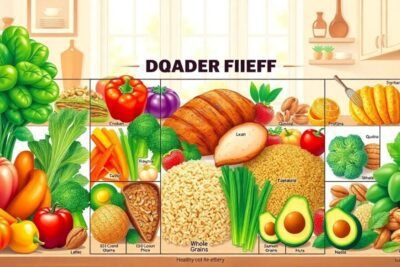
How to boost low blood pressure quickly
Low blood pressure, also known as hypotension, can lead to various symptoms that affect your daily life. Understanding how to boost low blood pressure quickly is essential for managing this condition effectively. This article explores various methods, remedies, and lifestyle changes to help elevate your blood pressure when needed.
- How to raise low blood pressure immediately at home
- What are the symptoms of low blood pressure?
- What foods help raise low blood pressure?
- What lifestyle changes can help manage low blood pressure?
- How to diagnose low blood pressure?
- What is considered a dangerous low blood pressure reading?
- How to treat low blood pressure at home?
- Related questions about managing low blood pressure
How to raise low blood pressure immediately at home
One of the quickest ways to raise low blood pressure is through simple home remedies. Increasing your fluid intake can help significantly, as dehydration is a common cause of low blood pressure. Drinking water, especially with a pinch of salt, can provide immediate relief.
Another effective method is to consume small, frequent meals throughout the day. Large meals can cause your blood pressure to drop, while balanced snacks can help maintain stability. Additionally, incorporating a bit of caffeine, like coffee or tea, can temporarily enhance blood pressure levels.
- Stay hydrated by drinking enough water.
- Include salt in your meals after consulting a healthcare professional.
- Opt for smaller, frequent meals to avoid blood pressure drops.
- Consider caffeine for a quick boost.
Incorporating light exercises, such as walking or stretching, can also stimulate blood circulation, helping to raise your blood pressure effectively.
What are the symptoms of low blood pressure?
Recognizing the symptoms of low blood pressure is crucial for timely intervention. Common symptoms include dizziness, fainting, blurred vision, and fatigue. These signs can arise suddenly or gradually, and it's essential to monitor them closely.
Hypotension can also lead to confusion or a lack of concentration, particularly in severe cases. If you experience any of these symptoms frequently, it's important to consult with a healthcare professional.
- Dizziness or lightheadedness
- Fainting spells
- Blurred vision
- Fatigue and weakness
- Confusion
By understanding these symptoms, you can take proactive steps to manage low blood pressure effectively.
What foods help raise low blood pressure?
Diet plays a significant role in managing blood pressure levels. Certain foods are particularly beneficial for raising low blood pressure naturally. Foods high in sodium can help elevate blood pressure, but moderation is key.
Foods rich in antioxidants, like fruits and vegetables, can also contribute positively. Incorporating meals that contain healthy fats, such as avocados and nuts, can assist in stabilizing blood pressure levels.
- Salty snacks like pretzels or salted nuts.
- Leafy greens, which are high in potassium.
- Beets, known for their blood pressure-boosting properties.
- Fruits like bananas and oranges.
- Whole grains for sustained energy.
Incorporating a balanced diet with these foods can help you learn how to increase blood pressure naturally.
What lifestyle changes can help manage low blood pressure?
Making specific lifestyle adjustments can significantly aid in managing low blood pressure. Regular physical activity is one of the most effective strategies. Exercise helps improve circulation and can elevate blood pressure levels.
Additionally, wearing compression stockings can enhance blood flow and prevent blood from pooling in your legs, which is especially helpful during prolonged sitting or standing.
- Engage in regular exercise to boost circulation.
- Wear compression stockings for better blood flow.
- Monitor your blood pressure regularly.
- Avoid standing still for long periods.
These lifestyle changes will not only help in managing low blood pressure but also contribute to overall health and well-being.
How to diagnose low blood pressure?
Diagnosing low blood pressure typically involves a series of evaluations by healthcare professionals. Blood pressure measurements are taken using a sphygmomanometer, assessing your readings at different times to understand your typical range.
Medical history and physical exams are also crucial components of the diagnosis process. It’s essential to inform your healthcare provider about any symptoms you experience, as this can aid in determining the underlying causes of your hypotension.
In some cases, further testing, such as blood tests or cardiac evaluations, may be recommended to assess potential health issues contributing to low blood pressure.
What is considered a dangerous low blood pressure reading?
A blood pressure reading below 90/60 mmHg is typically considered low. However, the danger level can vary based on individual health conditions. For some, even a slight drop can lead to significant symptoms.
It's crucial to monitor your body for signs of severe low blood pressure, such as fainting or shock. If you experience these symptoms, seek medical attention immediately to avoid serious health complications.
How to treat low blood pressure at home?
Treating low blood pressure at home often revolves around lifestyle adjustments and natural remedies. Increasing your water intake is one of the simplest and most effective methods. Adding a bit of salt can also help, but consult with your healthcare provider first.
Gradually changing positions when moving from sitting to standing can prevent dizziness. Incorporating regular, moderate exercise helps strengthen your cardiovascular system and can help elevate blood pressure.
- Increase fluid and salt intake.
- Change positions slowly to avoid dizziness.
- Engage in moderate exercise regularly.
- Consider herbal remedies like licorice root after consulting your healthcare provider.
By implementing these strategies, you can learn effective home remedies for low blood pressure and significantly improve your quality of life.
How can I raise my low blood pressure urgently?
If you need to raise your low blood pressure urgently, drinking a glass of water with salt can offer quick relief. Consuming caffeinated beverages may also help temporarily boost your numbers. However, it's vital to seek medical advice if symptoms persist.
What can bring your blood pressure up immediately?
Immediate ways to elevate your blood pressure include eating salty snacks, drinking fluids, or even standing up slowly to prevent a sudden drop. However, these measures are not substitutes for professional medical advice.
What to do immediately if BP is low?
If your blood pressure drops suddenly, lay down in a comfortable position and elevate your legs. This position helps blood flow back to your heart and brain, reducing the risk of fainting. Consuming fluids can also aid in elevating your blood pressure quickly.
What not to eat when BP is low?
When managing low blood pressure, it's advisable to avoid excessive carbohydrates as they can lead to a drop in blood pressure after meals. Additionally, steer clear of highly processed foods that can cause dehydration, which may exacerbate hypotension symptoms.
In conclusion, understanding how to boost low blood pressure quickly involves a combination of dietary changes, lifestyle adjustments, and home remedies. Regular monitoring and consulting with healthcare professionals are vital to effectively manage hypotension.










